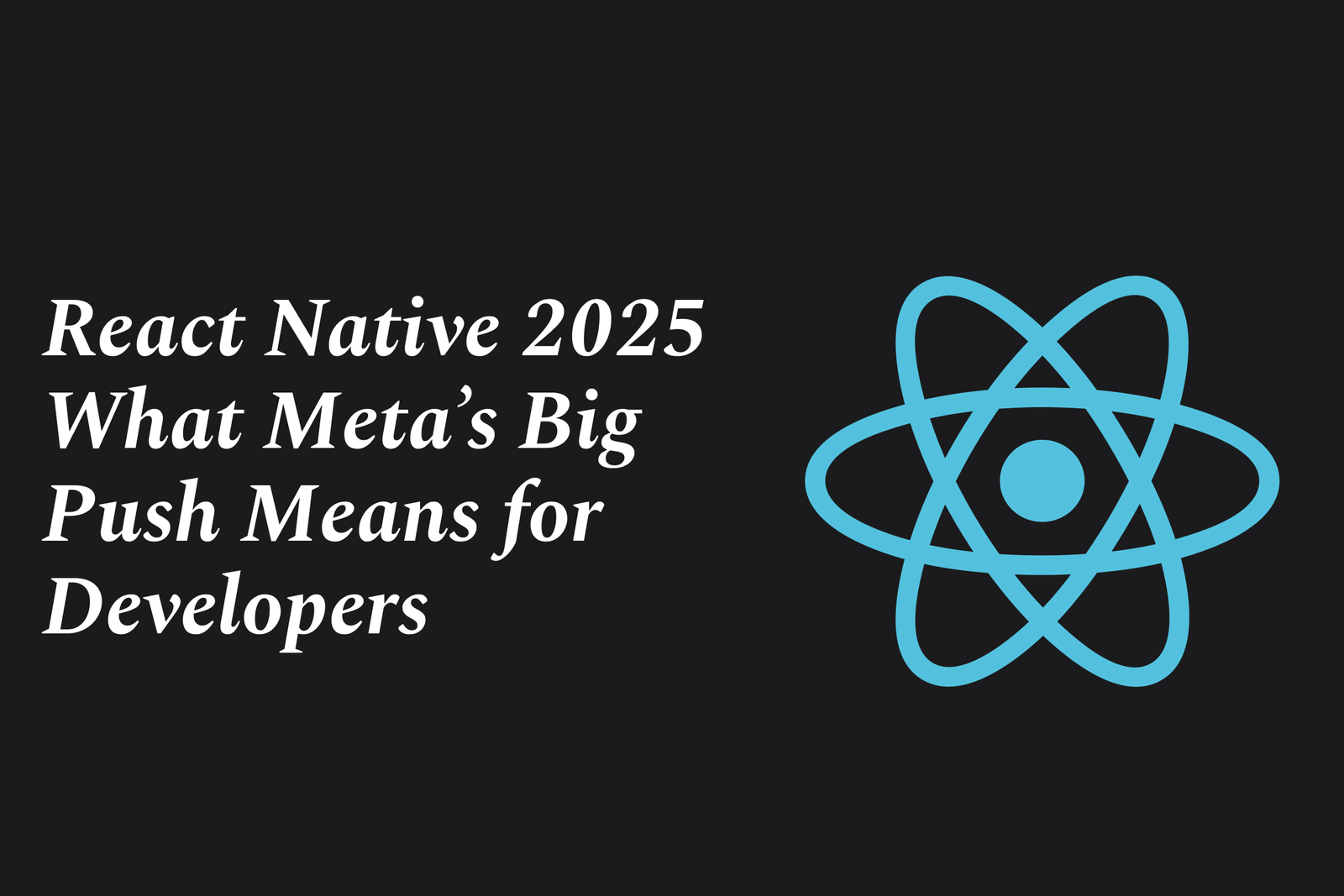React Native 2025: What Meta?S Big Push Means For Developers
React Native 2025 marks Meta’s major push to modernize the framework with a New Architecture focused on performance, stability, and seamless React integration, offering developers a faster, smoother cross-platform experience and stronger long-term support for mobile app development.
React Native 2025: What Meta's Big Push Means for Developers
1 ) Introduction to React Native in 2025
React Native remains a critical framework for mobile app development in 2025, leveraged by Meta (formerly Facebook) to push significant updates and improvements. Despite being over a decade old, React Native continues to evolve through community efforts and Meta’s commitment, with the latest releases incorporating modern React features and stabilizing the framework.
2 ) Meta’s Commitment and Major Updates
Meta has recently released React Native version 0.80, which includes several important advancements:
Integration with React 19.1, enhancing synergy with the latest React features.
Freezing of the Legacy Architecture to focus on the New Architecture, which is now the default from version 0.76 onwards.
Improvements towards a stable and modern JavaScript API, streamlining the developer experience and improving app performance.
3 ) The New Architecture: A Game Changer
React Native’s New Architecture is a fundamental overhaul designed to improve performance, reliability, and maintainability. It offers:
More efficient bridging between JavaScript and native code.
Better concurrency and resource management.
Enhanced tooling and developer diagnostics, making debugging and profiling easier and faster.
4 ) Why React Native Still Matters in 2025
Cross platform development efficiency: React Native allows developers to write one codebase that runs on both iOS and Android, saving time and resources.
Native performance: Unlike hybrid apps that use web views, React Native renders native UI components, delivering better user experience and performance.
Robust community and ecosystem: Continuous improvements and a strong developer network ensure React Native adoption remains high.
Meta’s direct support: Meta invests continually in React Native, ensuring alignment with React’s latest innovations and providing long term stability.
5 ) Developer Considerations and Alternatives
React Native suits projects that require rapid development with cross platform goals and moderate complexity.
For highly complex apps that demand deep native integrations or highest performance on iOS, native solutions like Swift may be preferable.
Other frameworks and approaches, such as native development or alternative multi platform solutions, are also considered based on project needs.
6 ) Conclusion: What Developers Can Expect
Meta’s strategic investment in React Native signals both stability and innovation for developers. The New Architecture and modern React integration position React Native as a versatile and modern option for mobile app development into 2025 and beyond. Developers can anticipate faster builds, improved debugging, and better app experiences, making React Native a compelling choice for cross platform application projects.
https://justacademy.in/news-detail/flutter-crash-analytics-tool-comparison
https://justacademy.in/news-detail/react-native-expo-bare-workflow:-what-you-should-know
https://justacademy.in/news-detail/kiosk-apps-with-flutter-and-embedded-uis
https://justacademy.in/news-detail/android-apps-leveraging-cloud-computing
https://justacademy.in/news-detail/flutter-open-source-tools-roundup
Related Posts
Java supports GDPR and data privacy by enabling secure data handling through encryption, controlled access, and precise data management. It allows developers to minimize PII exposure, ensure data confidentiality, and design workflows that comply with data protection regulations effectively.
Java code quality tools have evolved to include advanced static analysis, integrated security checks, and AI-powered code reviews. These updates help developers detect bugs, enforce coding standards, and enhance security, streamlining the development process and improving overall code reliability.
Java remains a cornerstone in big tech companies, evolving with modern features like records, pattern matching, and virtual threads. Its robust ecosystem, enhanced performance, and growing AI integrations keep it vital for both legacy systems and innovative new projects.
Java and CI/CD pipeline optimizations streamline Java application development by automating builds, tests, and deployments. They improve efficiency through parallelization, caching, and secure secrets management, enabling faster feedback loops and more reliable, scalable software delivery.
Java supports modern cryptography standards through its flexible Java Cryptography Architecture (JCA), enabling integration of advanced algorithms like AES, EdDSA, and post-quantum tools. Libraries like Bouncy Castle offer FIPS-certified, hardware-accelerated implementations for secure development.
Java 23 enhances record patterns by enabling concise, direct destructuring of record components within pattern matching, simplifying type checks and data extraction. This improvement boosts code readability and expressiveness by reducing boilerplate in handling immutable data classes.
Java remains a top choice for mobile app backends, powering scalable, secure, and high-performance server-side solutions. Latest trends include cloud-native microservices, reactive programming, and enhanced JVM optimizations, enabling efficient, flexible, and robust mobile backend development.
Java SE 24 and LTS Java SE 21 offer enhanced features and performance, while Apache Spark 4.0.0 introduces Scala 2.13 support and advanced ML and SQL capabilities. Together, they empower developers to build scalable, high-performance data applications with modern tools.
JUnit 5 modernizes Java testing with a modular architecture, improved assertions, and seamless Java 8+ support. Beyond JUnit, tools like Mockito and AssertJ enhance mocking and assertions, creating a powerful, flexible ecosystem for writing clean, efficient Java unit tests.
Java plays a pivotal role in cloud automation tools by providing a robust, platform-independent language used to build scalable automation frameworks like Jenkins and Selenium, enabling efficient CI/CD pipelines, testing, and orchestration across diverse cloud environments.










